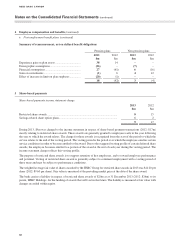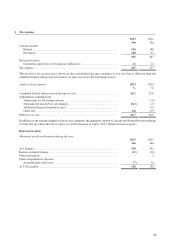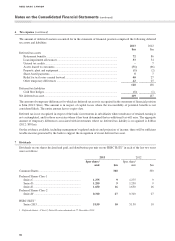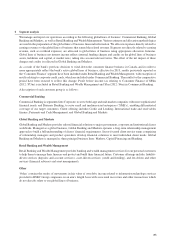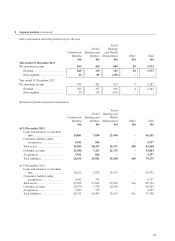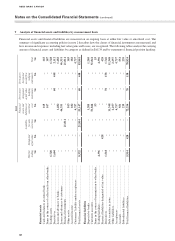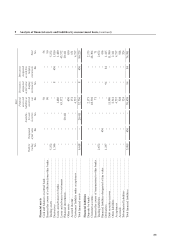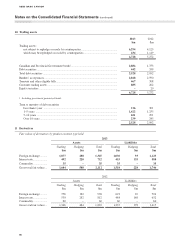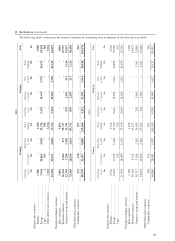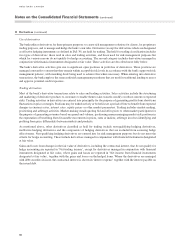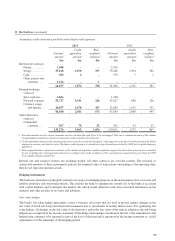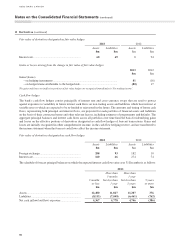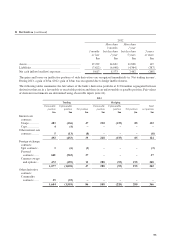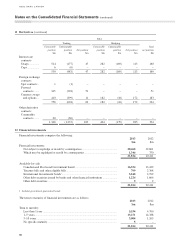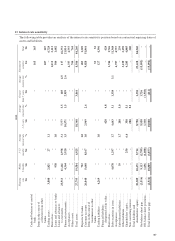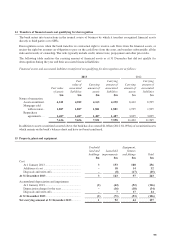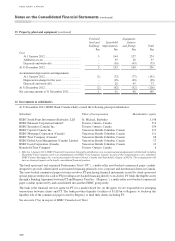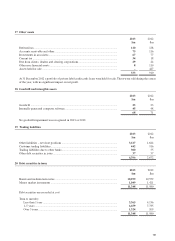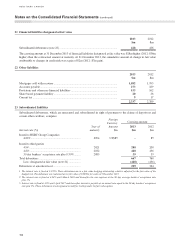HSBC 2013 Annual Report Download - page 94
Download and view the complete annual report
Please find page 94 of the 2013 HSBC annual report below. You can navigate through the pages in the report by either clicking on the pages listed below, or by using the keyword search tool below to find specific information within the annual report.
11 Derivatives (continued)
Use of derivatives
The bank utilizes derivatives for three primary purposes: to create risk management solutions for clients, for proprietary
trading purposes, and to manage and hedge the bank’s own risks. Derivatives (except for derivatives which are designated
as effective hedging instruments as defined in IAS 39) are held for trading. The held for trading classification includes
two types of derivatives: those used in sales and trading activities, and those used for risk management purposes but
which for various reasons do not qualify for hedge accounting. The second category includes derivatives managed in
conjunction with financial instruments designated at fair value. These activities are described more fully below.
The bank’s derivative activities give rise to significant open positions in portfolios of derivatives. These positions are
managed constantly to ensure that they remain within acceptable risk levels in accordance with the bank’s approved risk
management policies, with matching deals being used to achieve this where necessary. When entering into derivative
transactions, the bank employs the same credit risk management procedures that are used for traditional lending to assess
and approve potential credit exposures.
Trading derivatives
Most of the bank’s derivative transactions relate to sales and trading activities. Sales activities include the structuring
and marketing of derivative products to customers to enable them to take, transfer, modify or reduce current or expected
risks. Trading activities in derivatives are entered into principally for the purpose of generating prots from short-term
uctuations in price or margin. Positions may be traded actively or be held over a period of time to benet from expected
changes in currency rates, interest rates, equity prices or other market parameters. Trading includes market-making,
positioning and arbitrage activities. Market-making entails quoting bid and offer prices to other market participants for
the purpose of generating revenues based on spread and volume; positioning means managing market risk positions in
the expectation of beneting from favourable movements in prices, rates or indices; arbitrage involves identifying and
proting from price differentials between markets and products.
As mentioned above, other derivatives classied as held for trading include non-qualifying hedging derivatives,
ineffective hedging derivatives and the components of hedging derivatives that are excluded from assessing hedge
effectiveness. Non-qualifying hedging derivatives are entered into for risk management purposes but do not meet the
criteria for hedge accounting. These include derivatives managed in conjunction with nancial instruments designated
at fair value.
Gains and losses from changes in the fair value of derivatives, including the contractual interest, that do not qualify for
hedge accounting are reported in ‘Net trading income’, except for derivatives managed in conjunction with nancial
instruments designated at fair value, where gains and losses are reported in ‘Net income from nancial instruments
designated at fair value’, together with the gains and losses on the hedged items. Where the derivatives are managed
with debt securities in issue, the contractual interest is shown in ‘interest expense’ together with the interest payable on
the issued debt.
Notes on the Consolidated Financial Statements (continued)
HSBC BANK CANADA
92


